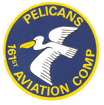 |
|
 |
[TOC] [Origin] [History] [Remembrance] [Taps] [Reunion] [Stories] [Pictures] [Guestbook] [Links]
The My Lai massacre was one of the most horrific incidents of violence committed against unarmed civilians during the Vietnam War. A company of American soldiers brutally killed most of the people—women, children and old men—in the village of My Lai on March 16, 1968.
While the massacre was occurring, aviation units from the 123rd Aviation Battalion observed what was happening, intervened and tried to stop some of the killing of civilians. Personnel who were once part of the 161st AHC before being reorganized into the 123rd Aviation Battalion were involved in this incident.
In November 1969, Stanley R. Resor, Secretary of the Army, and General William C. Westmoreland, U.S. Army Chief of Staff, directed Lieutenant General William R. Peers, U.S. Army, to “explore the nature and scope of the original Army investigations of what occurred on 16 March 1968 in Son My Village, Quang Ngai Province, Republic of Vietnam.” This collection of materials, commonly known as the “Peers Inquiry,” which provides the results of General Peers’ investigation of the “My Lai incident”— later also known as the “My Lai massacre”— is divided into four volumes: the report, witness testimonies, exhibit materials, and CID [U.S. Army Criminal Investigation Command] statements.
The Peers Report contains numerous first hand accounts of members of both A and B companies
About the Peers Commission. Go here:
https://www.loc.gov/rr/frd/Military_Law/Peers_inquiry.html
Click on TESTIMONY
A little bookshelf will pop up. That’s the testimony, in order of
appearance. They are PDF files that automatically open and the names of the
witnesses in that volume are listed on the left. They’re fairly well
grouped by unit, but you kind of have to root around.
[Copyright] [Privacy] [Contact Us]
